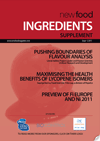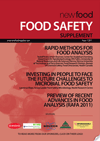A border crossing debate for a viable planet
4 January 2012 | By Hugo de Vries, Director of the Joint Research Centre on Biopolymers and Emerging Technologies, INRA
There is only one earth, a planet inhabited by a wide range of living organisms. There is only one primary energy source, the sun. Thanks to the sun, the earth is able to renew its resources on a temporal basis. Some may describe this as a cyclic process. However, a…






